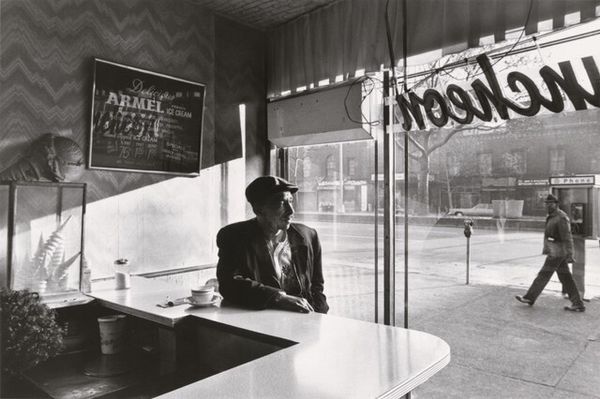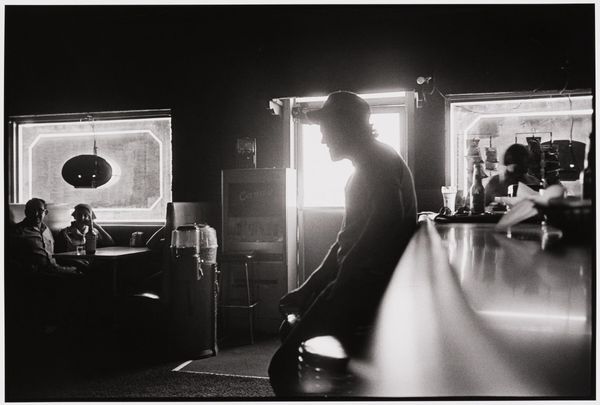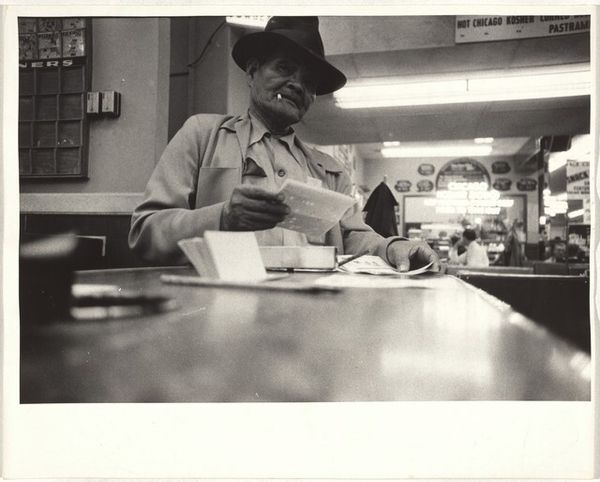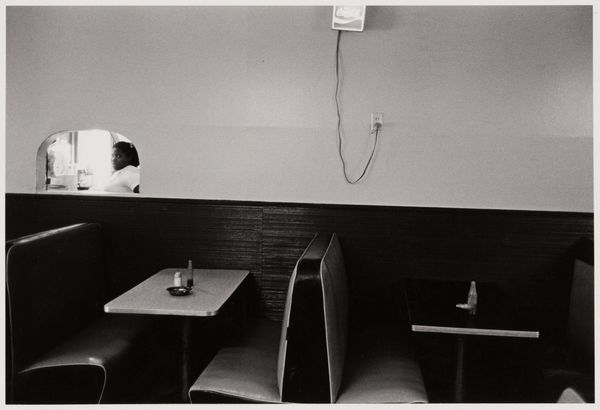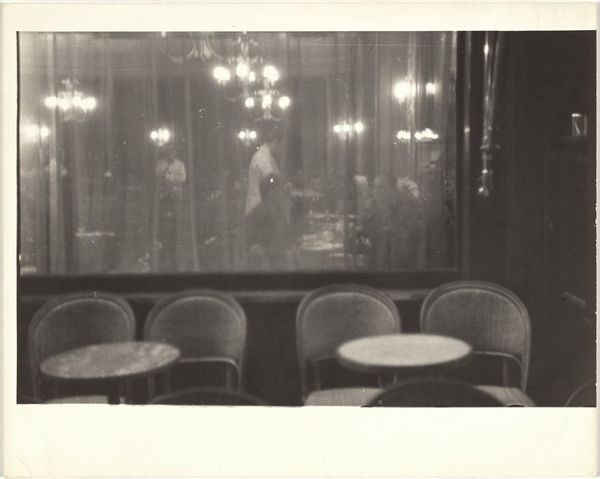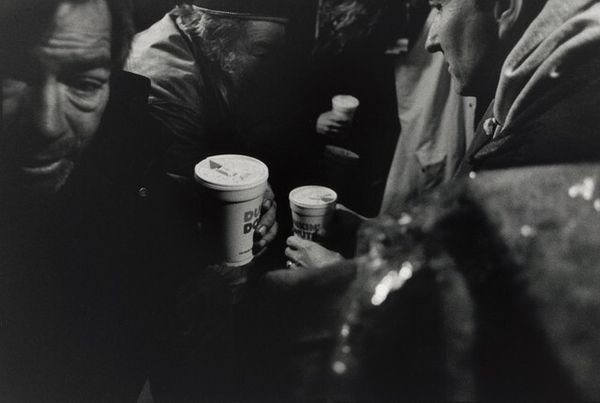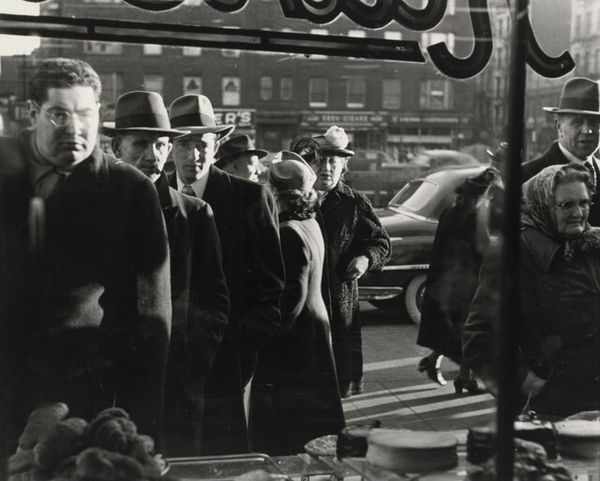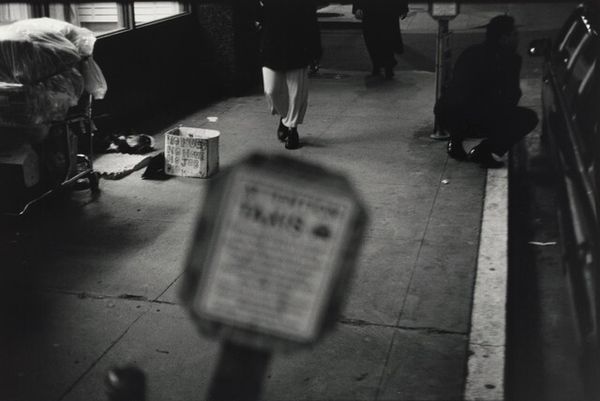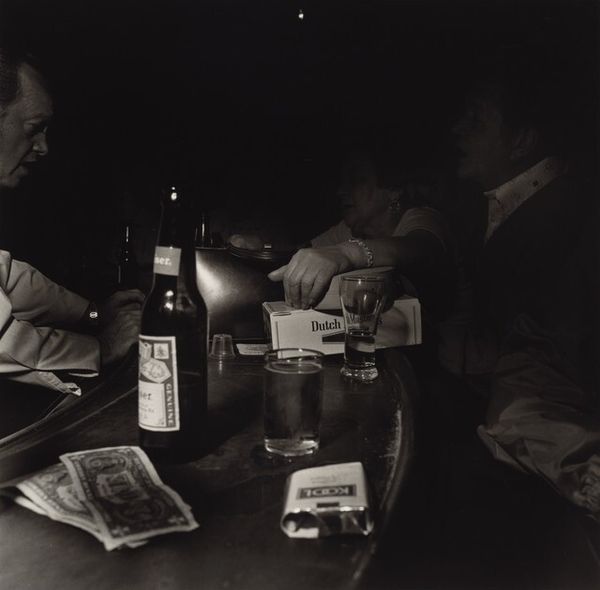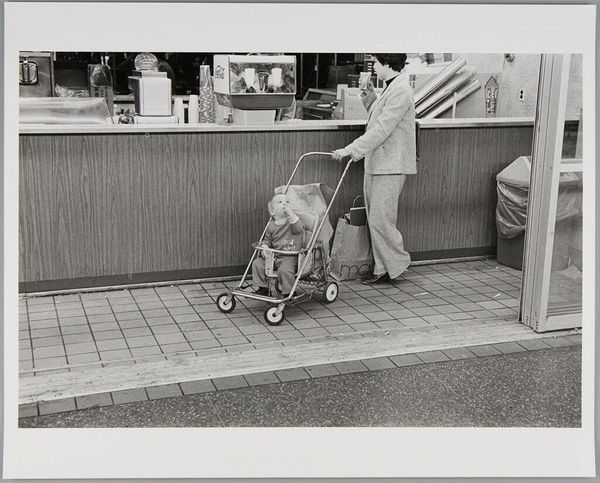
photography, gelatin-silver-print
#
black and white photography
#
black and white format
#
street-photography
#
photography
#
black and white
#
gelatin-silver-print
#
monochrome photography
#
genre-painting
#
monochrome
#
realism
Dimensions: sheet: 27.6 × 35.4 cm (10 7/8 × 13 15/16 in.) image: 21.4 × 32.6 cm (8 7/16 × 12 13/16 in.)
Copyright: National Gallery of Art: CC0 1.0
Curator: Welcome. We're standing before Jim Goldberg's gelatin-silver print, "Orphans of the Road," believed to have been created between 1990 and 1994. Editor: It's stark, almost confrontational, isn’t it? The deep blacks dominate. I feel a strong sense of social distance and the figures become anonymous in some way. Curator: Indeed. Goldberg is known for shedding light on marginalized communities. The high contrast here casts long shadows. We see individuals, primarily silhouettes, within what looks like a fast-food restaurant, separated by counters and light. The black and white emphasizes a documentary style. Editor: Absolutely. The scene is framed in such a way as to create visual tension. The shadowed figures in the foreground look to be staring across the space to the activity at the counter. The architecture further enhances the sense of isolation; everything feels incredibly functional. Curator: Goldberg often blends documentary and staged elements in his work to reveal socio-economic realities. This work encapsulates ideas of economic precarity as social alienation through the figures' anonymity. One almost feels transported to an Edward Hopper painting, but with a contemporary lens. Editor: This tension and precarity can really tell a larger narrative, like an archive of emotions that relates not just to the immediate lives of the subjects represented but perhaps a wider cross-section of the American populace in that era. Goldberg captures moments of urban living. Curator: And the ‘Orphans’ in the title speaks volumes, especially given Goldberg’s interest in at-risk youth at this time. In seeing the subjects consuming something within this casual restaurant as an act of momentary respite within harsh external conditions. Food becomes the simple momentary shared activity. Editor: Right, the title casts a long shadow too. The ‘orphans’ implies vulnerability, perhaps a loss of traditional support structures and in a time when there has been massive socioeconomic disruption. I like how the photo makes me question: who exactly are the ‘orphans’ in this frame? And what systems have failed them? Curator: The print's enduring power lies in its ambiguity. There isn’t a neatly wrapped moral in this black and white rectangle. Editor: A powerful meditation on poverty, social disconnect, and our shared humanity, prompting further reflections.
Comments
No comments
Be the first to comment and join the conversation on the ultimate creative platform.

